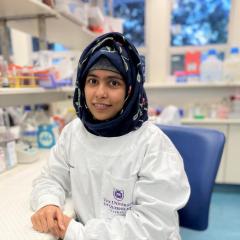Our group conducts research into innate immune system in the brain, in both health and disease, spanning embryonic neurodevelopment to adult neurodegeneration.
Therapeutic modulation of inflammation in neurodegenerative disease
Inflammation is increasingly implicated in the progression of neurodegenerative disease. The complement cascade and the inflammasomes are powerful innate immune systems that are key drivers of inflammation. Our laboratory is investigating the effects of complement and inflammasomes in several models of neurodegenerative disease, including motor neuron disease (MND or ALS), Huntington's disease, and Parkinson's disease, by using specific therapeutics developed by our team. We work closely with clinicians at Brisbane-based hospitals, who focus on these conditions, to help translate our knowledge into the clinic for the benefit of patients.
Complement anaphylatoxin agonists and antagonists as pharmacological modulators of immunopathology
We are collaborating with local and international medicinal chemists, immunologists and industry to develop and test novel drugs which target the inflammatory process induced by innate immune activation. Our goal is to identify new clinical drugs targeting key effectors of complement activation, to treat a wide range of immunological diseases.
Role of the innate immune complement system in the development and maintenance of the brain
We have discovered that components of the innate immune system are essential for aspects of neural development and health. Specific targeting of the complement system leads to neurodevelopmental and functional alterations in mice. We are exploring the roles this system plays in the developing and healthy adult brain, which will provide clues to what happens when things go wrong - and potential ways to combat this.
Development of novel therapeutics for inflammatory disease
Our research group has broad interests in utilising novel approaches to target factors that underly inflammatory disease. With our collaborators we have identified that dysfunction of the vascular endothelium is critical step in the development of inflammation and organ failure that occurs in sepsis. We are exploiting compounds that can protect endothelial cell damage by targeting the Eph-ephrin system, thus preventing vascular leak under conditions of inflammation.
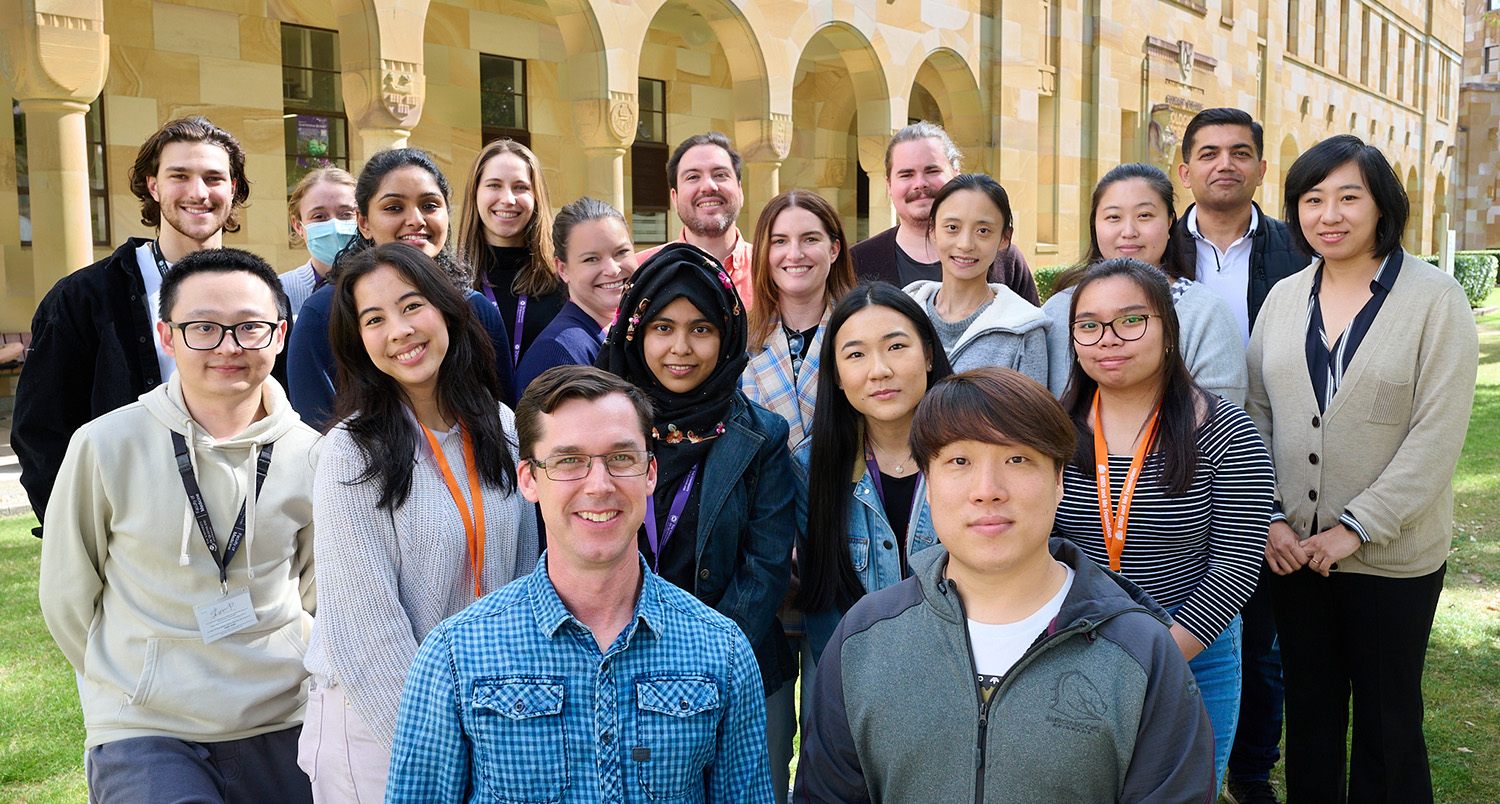
For a full list of our laboratory publications and citations, please use one of the following links:
Our covers
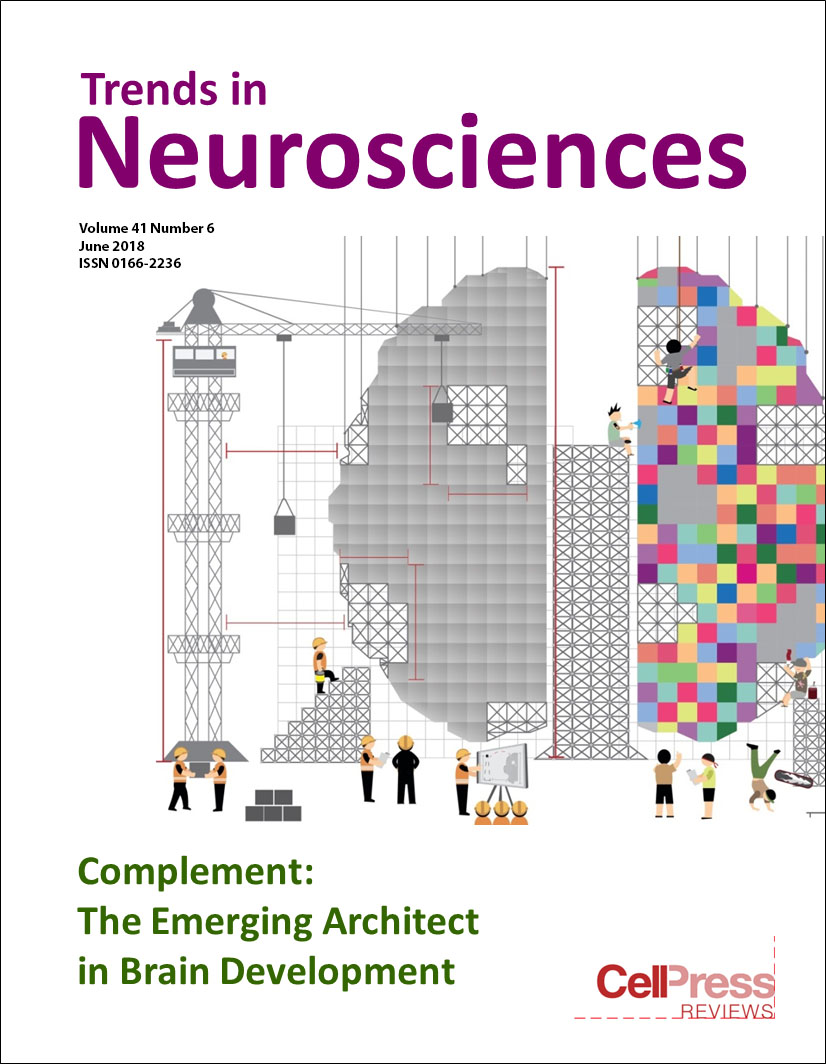
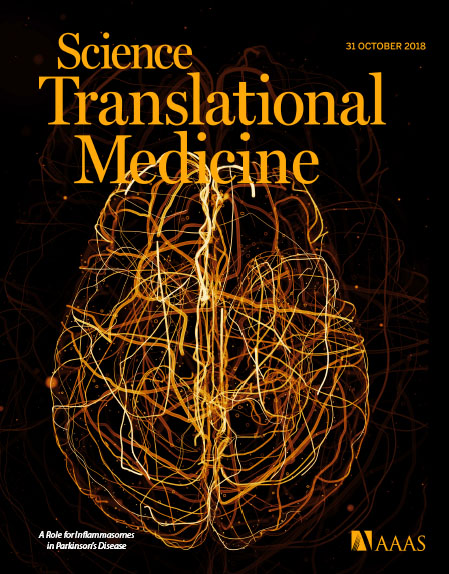
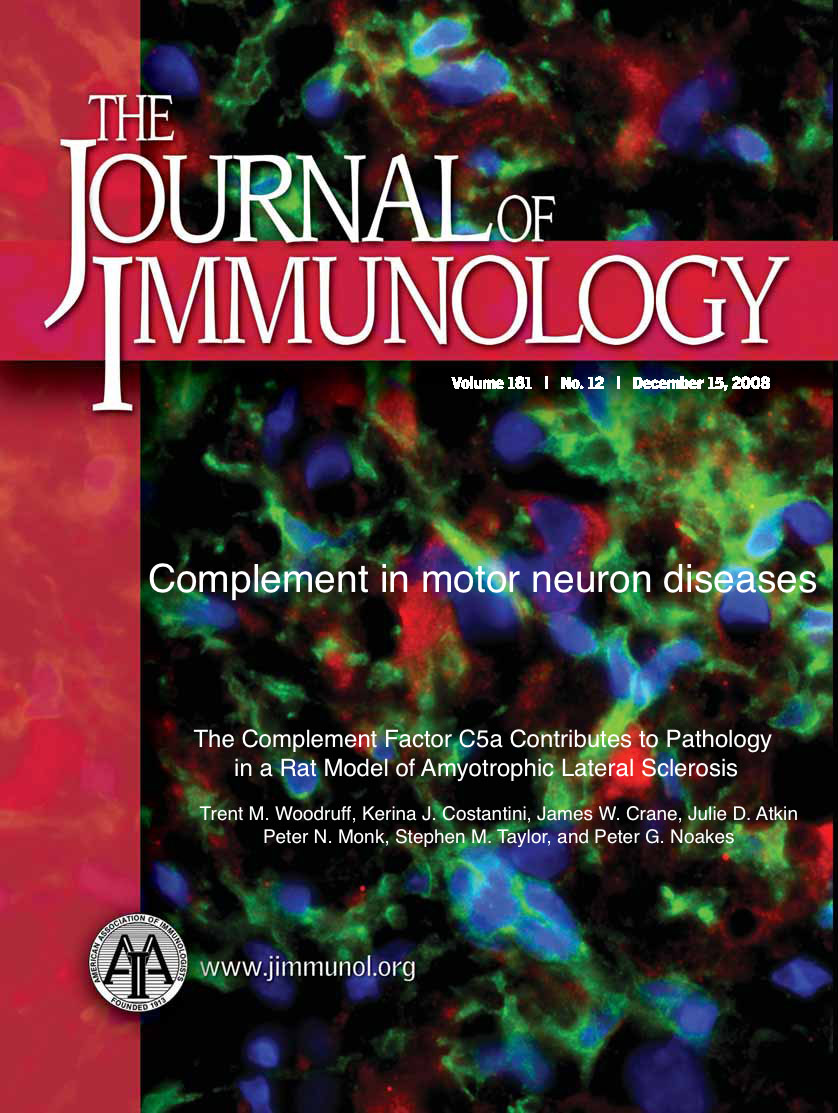
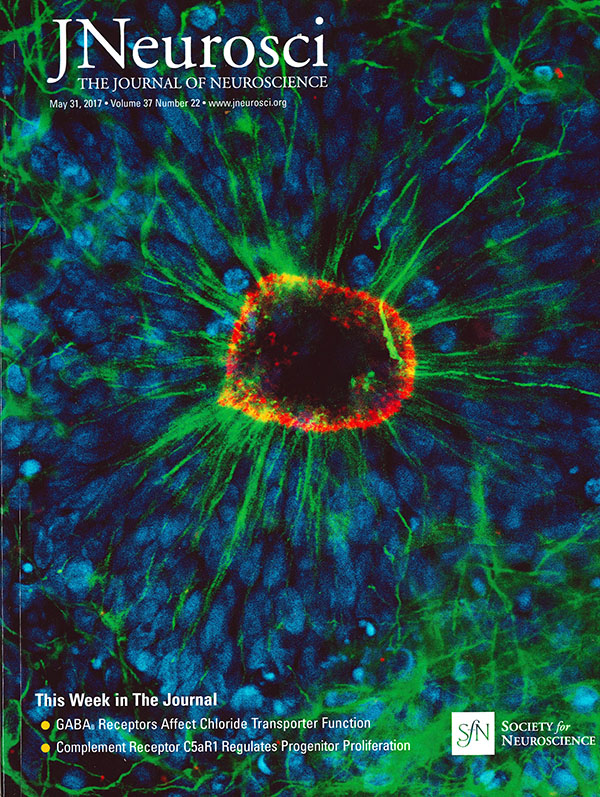
Selected research articles
Khan N, Kumar V, Li P; RAPIDS Study Group; Schlapbach LJ, Boyd AW, Coulthard MG*, Woodruff TM*. (2024). Inhibiting Eph/ephrin signaling reduces vascular leak and endothelial cell dysfunction in mice with sepsis. Science Translational Medicine. 16(744):eadg5768.
Li XX, Fung JN, Clark RJ, Lee JD, Woodruff TM. (2024). Cell-intrinsic C5a synergizes with Dectin-1 in macrophages to mediate fungal killing. Proc Natl Acad Sci USA. 121(5):e2314627121.
Li XX*, Woodruff TM*. (2023). Protocol for cell-based screening assay to measure ERK1/2 phosphorylation as a readout for complement receptor activation. STAR Protocols. 4(4):102758.
Albornoz EA, Gordon R, Kumar V, Robertson AAB, Schroder K, Woodruff TM. (2023). Response to Comment on "Inflammasome inhibition prevents α-synuclein pathology and dopaminergic neurodegeneration in mice". Science Translational Medicine. 15(696):eadh0604.
Yadav MK, Maharana J, Yadav R, Saha S, Sarma P, Soni C, Singh V, Saha S, Ganguly M, Li XX, Mohapatra S, Mishra S, Khant HA, Chami M, Woodruff TM, Banerjee R, Shukla AK, Gati C. (2023). Molecular basis of anaphylatoxin binding, activation, and signaling bias at complement receptors. Cell 186(22): 4956-73.
Albornoz EA, Amarilla AA, Modhiran N, Parker S, Li XX, Wijesundara DK, Aguado J, Zamora AP, McMillan CLD, Liang B, Peng NYG, Sng JDJ, Saima FT, Fung JN, Lee JD, Paramitha D, Parry R, Avumegah MS, Isaacs A, Lo MW, Miranda-Chacon Z, Bradshaw D, Salinas-Rebolledo C, Rajapakse NW, Wolvetang EJ, Munro TP, Rojas-Fernandez A, Young PR, Stacey KJ, Khromykh AA, Chappell KJ, Watterson D, Woodruff TM. (2023) SARS-CoV-2 drives NLRP3 inflammasome activation in human microglia through spike protein. Molecular Psychiatry. 28(7): 2878-93.
Lo MW, Amarilla AA, Lee JD, Albornoz EA, Modhiran N, Clark RJ, Ferro V, Chhabra M, Khromykh AA, Watterson D, Woodruff TM. (2022). SARS-CoV-2 triggers complement activation through interactions with heparan sulfate. Clinical and Translational Immunology. 11(8):e1413.
Li XX, Gorman DM, Lee JD, Clark RJ, Woodruff TM. (2022). Unexpected Off-Target Activities for Recombinant C5a in Human Macrophages. Journal of Immunology. 208(1):133-142.
Cui CS, Kumar V, Gorman DM, Clark RJ, Lee JD, Woodruff TM. (2021). In Vivo Pharmacodynamic Method to Assess Complement C5a Receptor Antagonist Efficacy. ACS Pharmacology and Translational Science. 5(1):41-51.
Pandey S, Kumari P, Baidya M, Kise R, Cao Y, Dwivedi-Agnihotri H, Banerjee R, Li XX, Cui CS, Lee JD, Kawakami K, Maharana J, Ranjan A, Chaturvedi M, Jhingan GD, Laporte SA, Woodruff TM, Inoue A, Shukla AK. (2021) Intrinsic bias at non-canonical, β-arrestin-coupled seven transmembrane receptors. Molecular Cell. S1097-2765(21)00741-3.
McGill RB, Steyn FJ, Ngo ST, Thorpe KA, Heggie S, Ruitenberg MJ, Henderson RD, McCombe PA, Woodruff TM. (2020) Monocytes and neutrophils are associated with clinical features in amyotrophic lateral sclerosis. Brain Communications.14;2(1):fcaa013.
Li XX, Lee JD, Massey NL, Guan C, Robertson AAB, Clark RJ, Woodruff TM. (2020) Pharmacological characterisation of small molecule C5aR1 inhibitors in human cells reveals biased activities for signalling and function. Biochemical Pharmacology.180:114156.
Li XX, Clark RJ, Woodruff TM. (2020) C5aR2 Activation Broadly Modulates the Signaling and Function of Primary Human Macrophages. Journal of Immunology. 5;205(4):1102-1112.
Deora V, Lee JD, Albornoz EA, McAlary L, Jagaraj CJ, Robertson AAB, Atkin JD, Cooper MA, Schroder K, Yerbury JJ, Gordon R, Woodruff TM. (2020) The microglial NLRP3 inflammasome is activated by amyotrophic lateral sclerosis proteins. Glia. 68(2):407-421.
Gordon R, Albornoz EA, Christie DC, Langley MR, Kumar V, Mantovani S, Robertson AAB, Butler MS, Rowe DB, O'Neill LA, Kanthasamy AG, Schroder K, Cooper MA, Woodruff TM. (2018). Inflammasome inhibition prevents α-synuclein pathology and dopaminergic neurodegeneration in mice. Science Translational Medicine. 10(465). pii: eaah4066.
Coulthard LG, Hawksworth OA, Li R, Balachandran A, Lee JD, Sepehrband F, Kurniawan N, Jeanes A, Simmons DG, Wolvetang E, Woodruff TM. (2017). Complement C5aR1 Signaling Promotes Polarization and Proliferation of Embryonic Neural Progenitor Cells through PKCζ. Journal of Neuroscience. 37(22):5395-5407.
Lee JD, Kumar V, Fung JN, Ruitenberg MJ, Noakes PG, Woodruff TM. (2017). Pharmacological inhibition of complement C5a-C5a1 receptor signalling ameliorates disease pathology in the hSOD1G93A mouse model of amyotrophic lateral sclerosis. British Journal of Pharmacology. 174(8):689-699.
Woodruff TM, Lee JD, Noakes PG. (2014). Role for terminal complement activation in amyotrophic lateral sclerosis disease progression. Proc Natl Acad Sci USA. 111(1):E3-4.
Wu MC, Brennan FH, Lynch JP, Mantovani S, Phipps S, Wetsel RA, Ruitenberg MJ, Taylor SM, Woodruff TM. (2013). The receptor for complement component C3a mediates protection from intestinal ischemia-reperfusion injuries by inhibiting neutrophil mobilization. Proc Natl Acad Sci USA. 110(23):9439-44.
Selected reviews
Li XX, Woodruff TM. (2025). The compliment system: Biology, pathology, and therapeutic interventions. Pharmalogical Reviews. 77(5):100079.
Lee JD, Woodruff TM. (2024). Complement(ing) long-COVID thromboinflammation and pathogenesis. Trends in Immunology. S1471-4906(24)00069-3.
West EE*, Woodruff TM*, Fremeaux-Bacchi V*, Kemper C*. (2023). Complement in human disease: approved and up-and-coming therapeutics. The Lancet. https://doi.org/10.1016/S0140-6736(23)01524-6 *equal contribution
Parker SE, Bellingham MC, Woodruff TM. (2022). Complement drives circuit modulation in the adult brain. Progress in Neurobiology. 214: 102282.
Woodruff TM, Shukla AK. (2020) The Complement C5a-C5aR1 GPCR Axis in COVID-19 Therapeutics. Trends in Immunology. 41(11):965-967.
Lee JD, Coulthard LG, Woodruff TM. (2019) Complement dysregulation in the central nervous system during development and disease. Semin Immunol. 45:101340.
Coulthard LG, Hawksworth OA, Woodruff TM. (2018). Complement: The Emerging Architect of the Developing Brain. Trends in Neuroscience. 41(6):373-384.
Coulthard LG, Woodruff TM. (2015). Is the complement activation product C3a a proinflammatory molecule? Re-evaluating the evidence and the myth. Journal of Immunology. 194(8):3542-8.
Students interested in undertaking research higher degrees are encouraged to contact Professor Woodruff and Dr John Lee.
The following projects are available:
- Therapeutic potential of targeting innate immune molecules in neurodegenerative disease.
- Discovery and development of novel therapeutics targeting inflammatory diseases.
- Clinical studies to validate innate immune targets in neurological disease.
We specialise in Parkinson’s disease, motor neuron disease; MND (amyotrophic lateral sclerosis; ALS), Huntington's disease, and neuroinflammation assays.
- Capacity in preclinical drug testing (efficacy) in disease models, or target validation studies.
- Range of state-of-the-art disease models accepted by funders and regulators as best-practice preclinical efficacy models.
- An extensive range of both standardised and novel behavioural and pathological analyses that can be customised to suit individual requirements.
- Can be coupled with pharmacodynamic and pharmacokinetic data from the same animal to maximise data output and assay validation.
- Successful record in completing industry contracts, with two drugs undergoing human clinical trials after successful testing in preclinical models.
- Strong publication track record in preclinical neurodegenerative disease animal studies.
- Offer opportunities for leverage funding through non-diluting grant funding.
- Competitive rates for both fee-for-service or collaborative research projects.
In vivo models available
- Neuroinflammation endotoxin model (peripheral or central induction)
- Parkinson’s disease 6-hydroxydopamine (6-OHDA) model
- Parkinson’s disease synuclein pre-formed fibril (PFF-Syn) model
- Motor neuron disease SOD1G93A transgenic mouse model
- Motor neuron disease TDP43-transgenic mouse models
- Huntington’s disease R6/1 transgenic mouse model
In vitro/ex vivo models available
- Primary human microglia neuroinflammation assays (derived from human blood)
- Primary mouse microglia neuroinflammation assays (derived from mice CNS tissue)
- Whole blood activation assays
- UQ develops new drug for sepsis (May 2024)
- Scientific imagery validates UQ-developed drug for inflammatory disease treatment (October 2023)
- ‘A silent killer’ - COVID-19 shown to trigger inflammation in the brain (November 2022)
- Researchers target key protein to fight inflammatory disease (September 2021)
- Immunity key to motor neurone disease treatment (February 2020)
- Cooling 'brains on fire' to treat Parkinson's (November 2018)
- Researchers find neurological conditions could begin in the womb (May 2017)
- UQ shines spotlight on research excellence (September 2017)
- Drug could slow motor neuron disease (March 2017)
- Unlocking secrets of the immune system could help combat colitis (June 2016)
If you would like to make a tax deductible donation to neuroinflammation research, please contact med.advancement@uq.edu.au. Thank you for your support.
Find out more about our diverse range of research interests.






